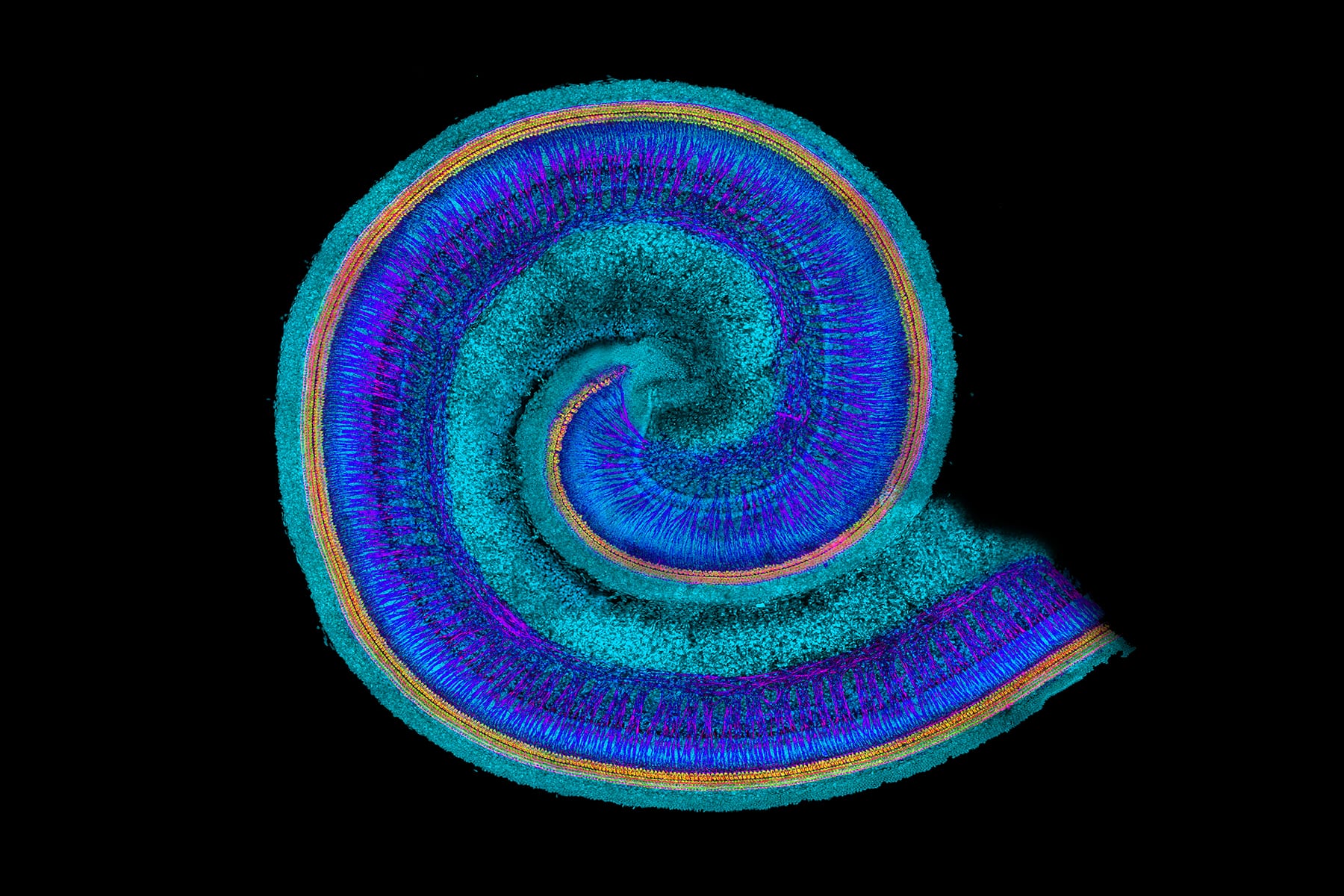
A New Frontier: The Inner Ear
What happens when a successful biotech venture capitalist is unexpectedly diagnosed with a chronic, life-disrupting vertigo disorder? Innovation in neurotology.
That venture capitalist was Jay Lichter, Ph.D., and after learning there was no FDA-approved drug treatment for his condition, Ménière’s disease, he decided to create a company to bring drug development to neurotology. Otonomy was founded in 2008 and is dedicated to finding new drug treatments for the hugely underserved community living with balance and hearing disorders. Helping patients like Jay has been the driving force behind Otonomy, a company heading into a transformative 2020 with three clinical trial readouts: Phase 3 in Ménière’s disease, Phase 2 in tinnitus, and Phase 1/2 in hearing loss. These catalysts, together with others in the field, highlight the emerging opportunity in neurotology.
Otonomy is leading the way in neurotology
Neurotology, or the treatment of inner ear neurological disorders, is a large and untapped market for drug developers: one in eight individuals in the U.S. have moderate-to-severe hearing loss, tinnitus or vertigo disorders such as Ménière’s disease.1 With no FDA-approved drug treatments available for these conditions, the burden on patients—including social anxiety, lower quality of life, reduced work productivity, and higher rates of depression—can be significant.2, 3, 4
![]()
A major reason for the lack of therapies is the challenge of delivering drugs to the hearing and balance organs, which are protected within the inner ear. Using patented formulation technology, Otonomy pioneered the ability to achieve sustained otic drug levels via a single local administration called an intratympanic injection. This is a simple procedure routinely performed by an ENT in the office and it holds the potential to revolutionize treatment for neurotology in the same way that intravitreal injections transformed treatment in ophthalmology.
“As a physician who daily sees the significant impact that hearing and balance disorders can have on patients and their families, I am excited by the prospect of new drug treatments for these conditions,” says Anthony Mikulec, MD, MBA, Chief of Otology and Neurotology and Professor at St. Louis University Medical Center. “By overcoming the challenge of delivering drugs to the inner ear, Otonomy is leading the way in neurotology drug development and spurring interest in the field that now includes a breadth of clinical programs holding great promise for patients.”
While most people are probably familiar with hearing loss due to aging, there is low awareness of other types of neurotological disorders—despite the large numbers of people affected by symptoms that can be life-altering.
Clinical program: Ménière’s disease
Take for instance Ménière’s disease, an acute vertigo disorder accompanied by hearing loss and tinnitus that affects more than 850,000 people in the U.S. As experienced by Otonomy’s founder, the vertigo attacks associated with Ménière’s disease occur without warning, last from minutes to hours and can recur for months. When the world is spinning, patients can’t function either at home or at work, and there are no FDA-approved drug treatments to help reduce the frequency or severity of attacks. Otonomy has completed one successful Phase 3 trial for OTIVIDEX™, a sustained-exposure steroid formulation, and results of an ongoing Phase 3 trial are expected in the third quarter of 2020.
Clinical program: Tinnitus
Tinnitus (ringing in the ear) is another neurotological condition that can significantly affect a person’s physical and emotional well-being. Thirty million people in the U.S. experience tinnitus, and for 8 million the ringing is severe enough that it impacts their ability to sleep, relax and concentrate at work. In these cases, anxiety and depression are common. Unfortunately for patients, there are no FDA-approved tinnitus drug treatments available. To address this need, Otonomy is developing OTO-313, a sustained-exposure formulation of the potent and selective NMDA receptor antagonist gacyclidine. Results from a Phase 2 trial of OTO-313 are expected in the second quarter of 2020.

Clinical program: Hearing Loss
Affecting nearly half a billion people worldwide,5 hearing loss is the most common disorder in neurotology and is only expected to grow as our population ages and our world becomes noisier. Often, the first sign is difficulty understanding a conversation in a noisy environment. Researchers call this “speech-in-noise” hearing difficulty and have demonstrated that it is due to damaged neuronal connections in the ear. Otonomy is evaluating OTO-413, a sustained-exposure formulation of the nerve growth factor BDNF, as a potential treatment for speech-in-noise hearing loss. Results from a Phase 1/2 trial of OTO-413 are expected in the second half of this year.
“Neurotological diseases affect millions of people of all ages, and they all deserve a future less encumbered by the daily burden of hearing and balance disorders,” says David A. Weber, Ph.D., President and CEO of Otonomy. “Our three clinical milestones in 2020 provide a transformational opportunity for Otonomy and will, we hope, serve as an important inflection point for the emergence of this exciting new field.”
To follow the latest developments on the neurotology field and Otonomy, visit www.otonomy.com.
Actual results may differ from those indicated from the forward-looking statements herein as result of risks and uncertainties as described in the risk factors in Otonomy’s filings with the SEC.
1 ClearView Healthcare Partners analysis.
2 Rutherford BR, Brewster K, Golub JS, et al. Sensation and psychiatry: linking age-related hearing loss to late-life depression and cognitive decline. Am J Psychiatry. 2018;175(3):215-224.
3 American Tinnitus Association. Impact of tinnitus. https://www.ata.org/understanding-facts/impact-tinnitus. Accessed 6 June 2019.
4 Tyrell et al. The Cost of Ménière’s Disease: A Novel Multisource Approach. Ear & Hearing. 2016;37(3):e202-209.
5 World Health Organization. Global estimates on prevalence of hearing loss. [Presentation] 2018. https://www.who.int/pbd/deafness/estimates/en. Accessed 5 June 2019.